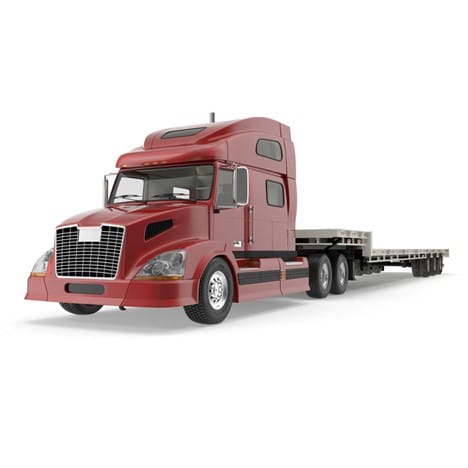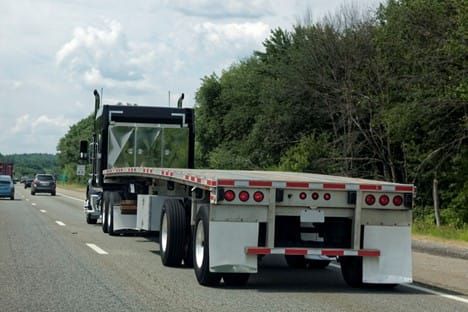
Loading a Flatbed Trailer comes with several factors to consider for ensuring optimum safety and stability. These factors include the overall weight of your load, how the weight is distributed, the proper tongue weight, and properly securing the load. With a long history in the storage container, trailer, and flatbed leasing industry, our team at Eagle Leasing is happy to give you a rundown on all of the above.
Overall Load Weight
Most Flatbed Trailers come with a total weight rating, which is the total weight of the flatbed and its contents. This rating is also known as the Gross Vehicle Weight Rating or GVWR, and it’s something you need to know before you even begin. You’ll also need to know the weight of the flatbed without anything on it.
You can then subtract the weight of the empty flatbed from the GVWR, giving you the maximum weight of the items you intend to put on the trailer.
Load Weight Distribution
Different areas of the flatbed also have weight ratings, such as the axles, wheels and tires. Take note of the different ratings and make sure no specific area of the flatbed is loaded beyond its capacity.
To keep your load stable, you want to keep the center of gravity as low as you can. That means loading heavier items on the floor and above the axles. As you add more items to your load, try to maintain equal weight on each side of the flatbed. You don’t want one side to end up much heavier than the other; you want the weight to be evenly distributed.
Another general rule is to load your items onto the flatbed in such a way that about 60% of the items are in the front half of the flatbed.

Tongue Weight
Tongue weight refers to the weight that your fully loaded flatbed exerts down on the hitch ball of the vehicle towing it. The rule of thumb is that your tongue weight needs to be around 10 to 15% of your total trailer weight (GVWR).
So if your GVWR is 5,000 pounds, your tongue weight needs to be around 500 pounds.
Securing the Flatbed Load Properly
Securing your items to the flatbed is another must. Here, you want to use the proper chains, straps and tensioning devices for the types of items you’re securing. No matter what type of cargo you may be hauling, you want to remember to keep your load restrained and contained.
- Restrained means secured to the flatbed in such a way that the load will not fall over.
- Contained means secured in a way that it will not shift in any direction. This could be forward, backward or side to side.
While there are many other details you’ll run across while loading a flatbed, these four factors give you a good starting point on the basic necessities. If you have any questions or want more information on leasing a flatbed trailer in the Northeast from Eagle Leasing, give us a call at 1-800-GET-EAGLE (1-800-438-3245) today.








